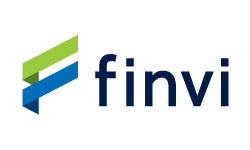Source: site
Most people know that their credit score matters, but few stop to think about who controls the system behind it. In the US, that power has long rested with Fair Isaac (US:FICO), the company that holds a near-monopoly in mortgage lending because the government-backed bodies that buy most home loans only accept its credit scores when assessing borrowers.
So when FICO unveiled a new pricing regime earlier this month – promising lenders up to 50 per cent savings by selling scores directly rather than through the credit bureaus – it sent a shockwave through the industry. Shares in Experian (EXPN), Equifax (US:EFX) and TransUnion (US:TRU) all wobbled as investors digested what the change could mean for them.
FICO, whose scoring model relies on consumer credit data licensed from the three major bureaus, applies an algorithm to generate scores that the bureaus then sell to the so-called ‘tri-merge’ providers, the intermediaries that provide full credit reports to banks and other mortgage lenders.

More noise than substance
Under the current system, FICO charges the bureaus a royalty fee of around $4.95 (£3.7) per score, which the bureaus typically resell for twice that amount. FICO’s new direct licensing programme aims to cut out that middle step, eliminating the bureau mark-up but continuing to pay the bureaus for the underlying data that lenders rely on.
That means Experian, Equifax and TransUnion keep their data revenue – the bulk of mortgage-related sales – but lose the high-margin fees they previously earned on reselling FICO’s scores. “Longer-term, we believe value resides in the data, not the score,” said Jefferies analyst Ryan Flight. “We also note this is isolated to US mortgages – the only product that mandates a FICO score.”
Read more from Investors’ Chronicle
Most analysts think the sell-off has gone too far. Experian, TransUnion and Equifax together made up around 45 per cent of FICO’s revenue last year. Yet Redburn Atlantic analyst Simon Clinch estimates that only about 4 per cent of Experian’s revenue comes from US mortgages, meaning the likely hit to adjusted earnings per share is closer to 3 per cent.
Wolfe Research estimates that the damage could be higher for Equifax and TransUnion – a high single-digit earnings before interest, tax, depreciation and amortisation impact – but only in the low single digits for Experian. Analyst Scott Wurtzel puts Experian’s mortgage exposure at just 3 per cent, with less than half of that tied to FICO scores. Overall, two-thirds of Experian’s revenue comes from the US across the various product groups.
“It’s a bit of an overreaction, but still overall, because they have the lowest mortgage exposure as a percentage of revenue of the group, they likely have the most defensibility to any potential disintermediation from FICO,” said Wurtzel, whose estimates do not assume any mitigating actions from the bureaus to offset or neutralise the potential loss of revenue.
Ninety One fund manager Ben Needham told Investors’ Chronicle that resellers lack the infrastructure to process bureau data independently, meaning bypassing Experian isn’t practical. But even if they lose the mark-up they earn on FICO scores, they can make up for it by charging lenders and resellers more for access to their underlying credit data.
A complicated friendship
The shift also gives Experian and peers a reason to push VantageScore, the rival credit scoring model jointly owned by the three bureaus created back in 2006 to loosen FICO’s grip on the industry. In 2022, the Federal Housing Finance Agency approved VantageScore 4.0 for use in mortgage lending, but implementation could still take years.
But if lenders start switching once that happens, it could take some of the pricing power away from FICO and boost margins at Experian, Equifax and TransUnion. That’s because VantageScore doesn’t carry any royalty fees, so every score sold feeds directly into the bureaus’ own revenues rather than being shared with FICO.
“It’s still a nuisance for banks to change their risk models but given FICO’s run of price increases they might force the hand of the industry to drive that change, [so] the cost equation of redoing models may well have tipped in favour of switching to Vantage scores,” said Needham. “This would obviously be a net positive for Experian if it happens.”
Equifax and Experian have already gone on the offensive to protect their mortgage margins from FICO’s new model and push for VantageScore adoption. Last week, Equifax said it would offer VantageScore for free until the end of 2026, then $4.50 per score – roughly half FICO’s $10 rate.
Last week, Experian launched a new bundled credit report product that includes both FICO and VantageScore, the latter free of charge for now and potentially at a 50 per cent discount later. The aim is also to push adoption now and undercut FICO on price later.
“Our FY2026 financial guidance and medium-term financial framework are unaffected by this new offer,” the company said. “In the longer term, we anticipate enhanced profitability as the US mortgage market converts to better scores.”




